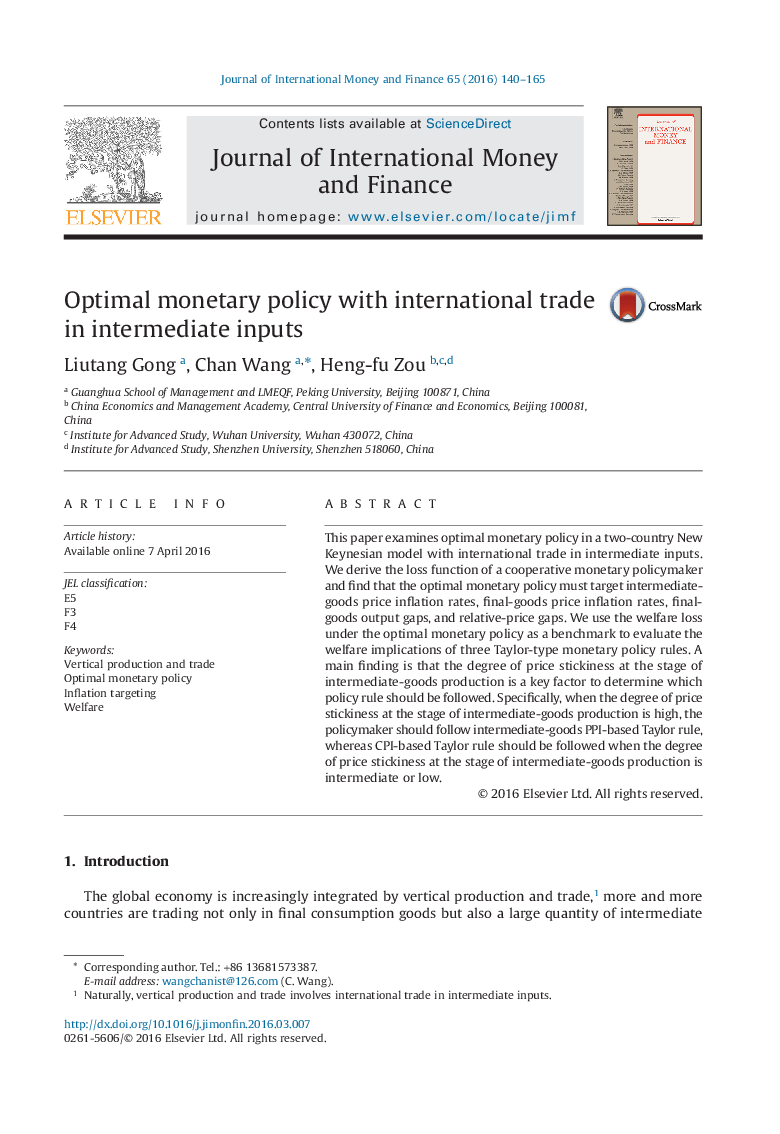| کد مقاله | کد نشریه | سال انتشار | مقاله انگلیسی | نسخه تمام متن |
|---|---|---|---|---|
| 964619 | 1479153 | 2016 | 26 صفحه PDF | دانلود رایگان |
• We introduce international trade in intermediate inputs into a monetary model.
• A cooperative policymaker targets price inflation, output gap and relative-price gap.
• Targeting CPI, final and intermediate-goods PPI inflation are compared.
• Targeting intermediate-goods PPI is best if intermediate-good price is highly sticky.
• Targeting CPI is best if intermediate-good price is intermediately or less sticky.
This paper examines optimal monetary policy in a two-country New Keynesian model with international trade in intermediate inputs. We derive the loss function of a cooperative monetary policymaker and find that the optimal monetary policy must target intermediate-goods price inflation rates, final-goods price inflation rates, final-goods output gaps, and relative-price gaps. We use the welfare loss under the optimal monetary policy as a benchmark to evaluate the welfare implications of three Taylor-type monetary policy rules. A main finding is that the degree of price stickiness at the stage of intermediate-goods production is a key factor to determine which policy rule should be followed. Specifically, when the degree of price stickiness at the stage of intermediate-goods production is high, the policymaker should follow intermediate-goods PPI-based Taylor rule, whereas CPI-based Taylor rule should be followed when the degree of price stickiness at the stage of intermediate-goods production is intermediate or low.
Journal: Journal of International Money and Finance - Volume 65, July 2016, Pages 140–165
